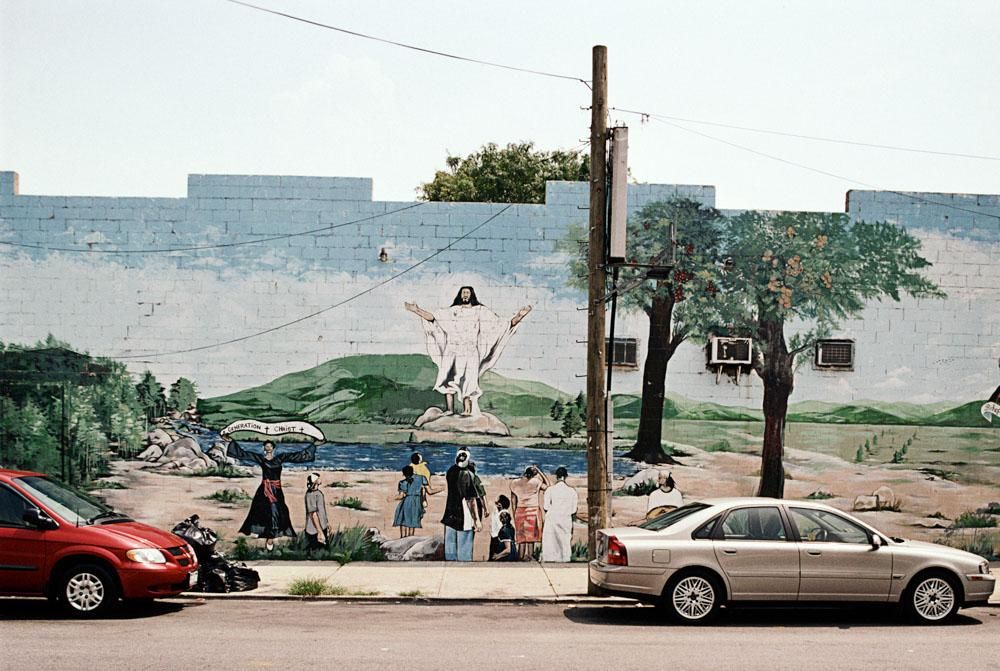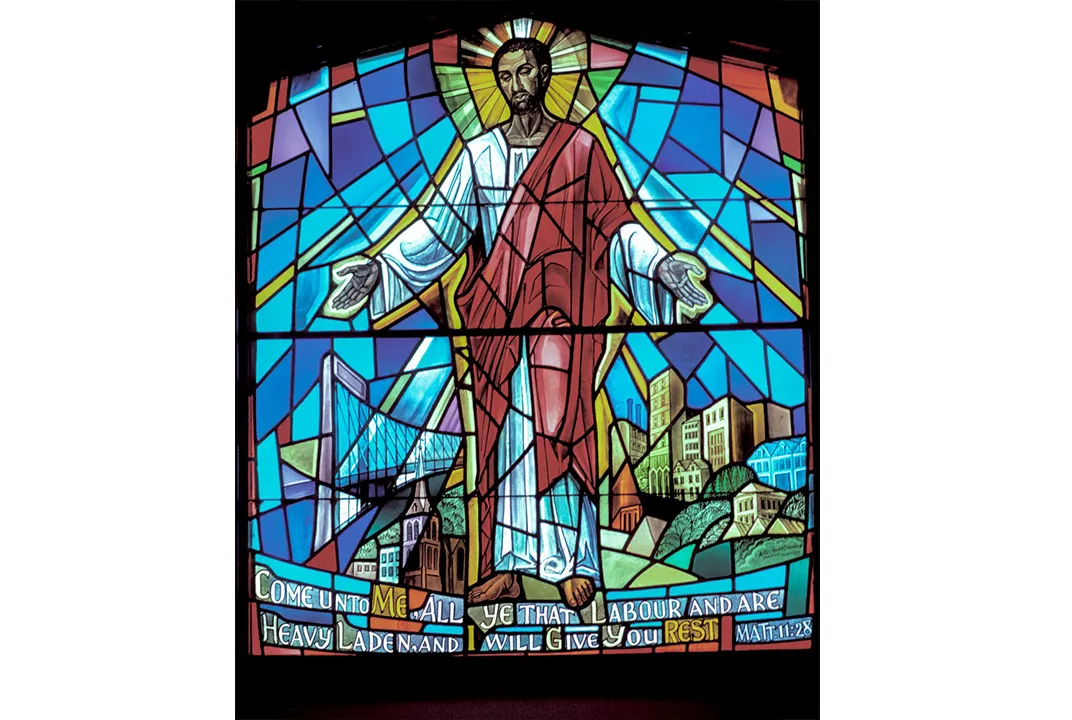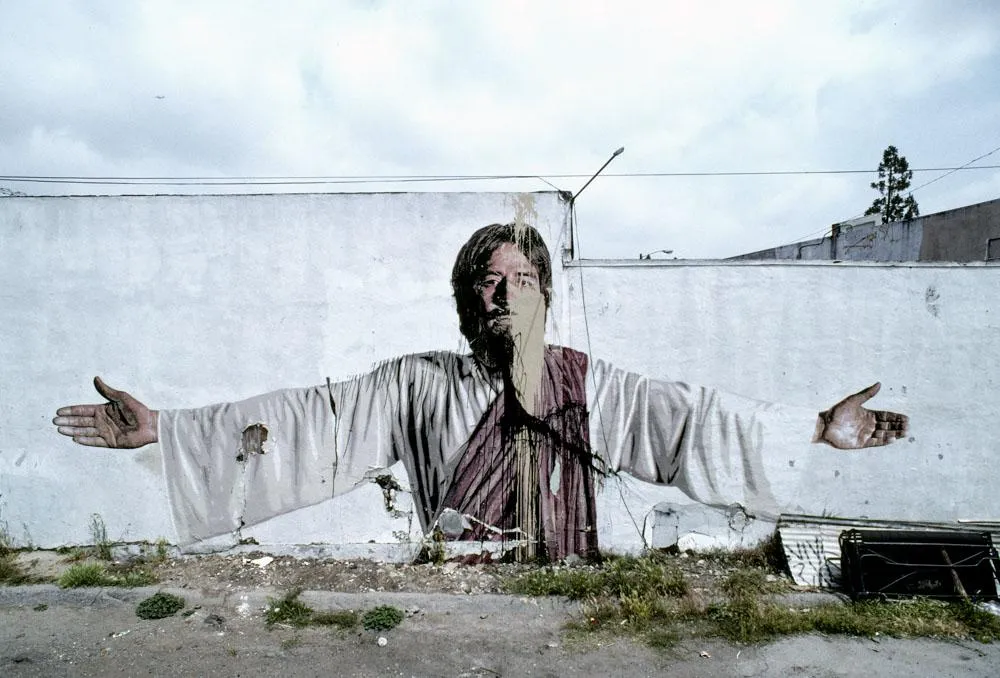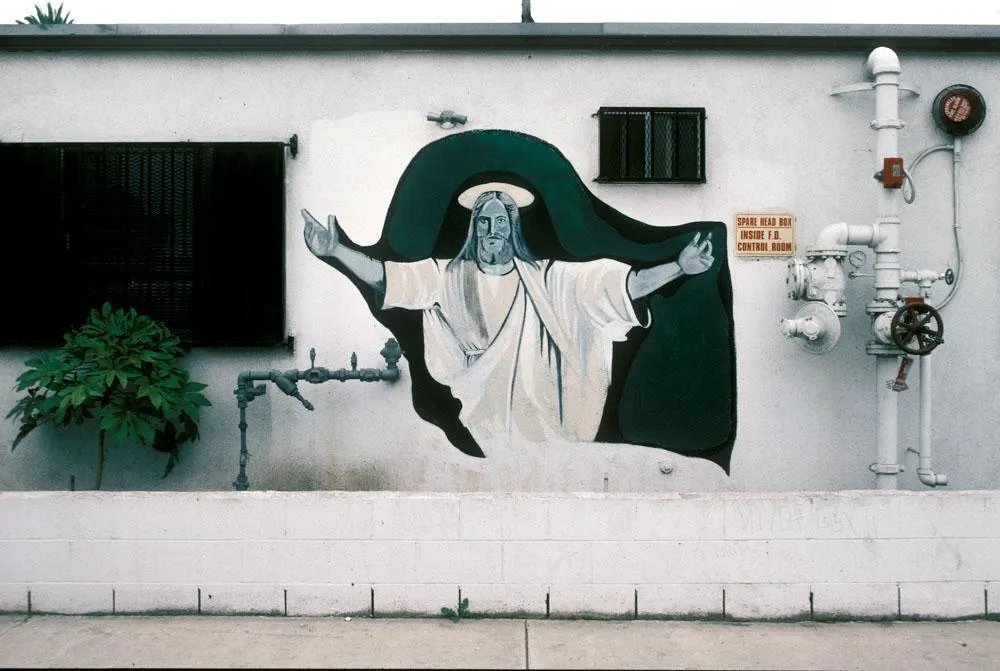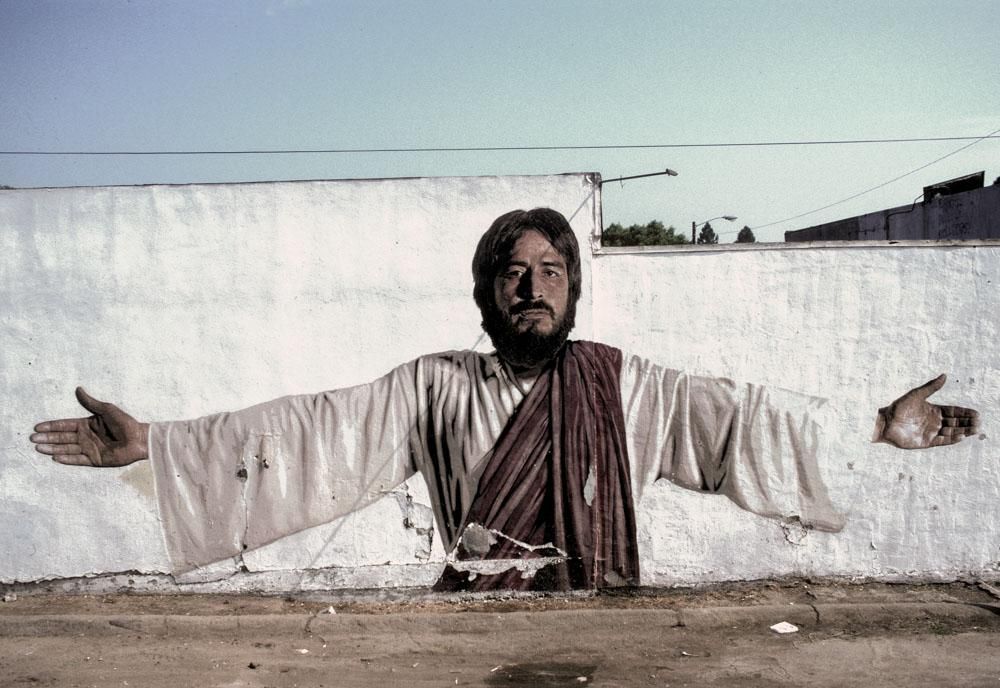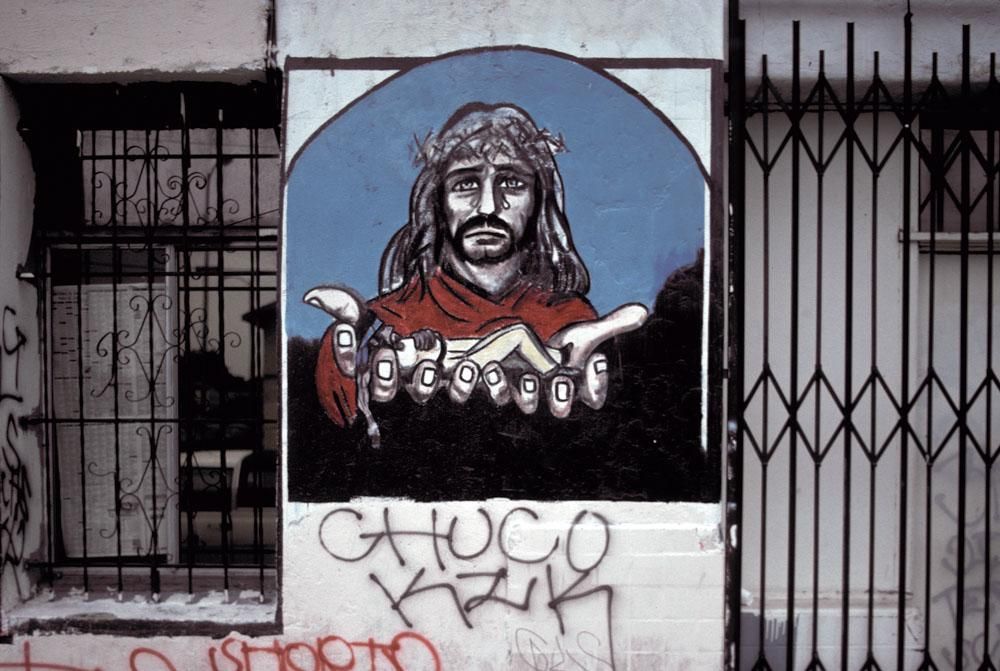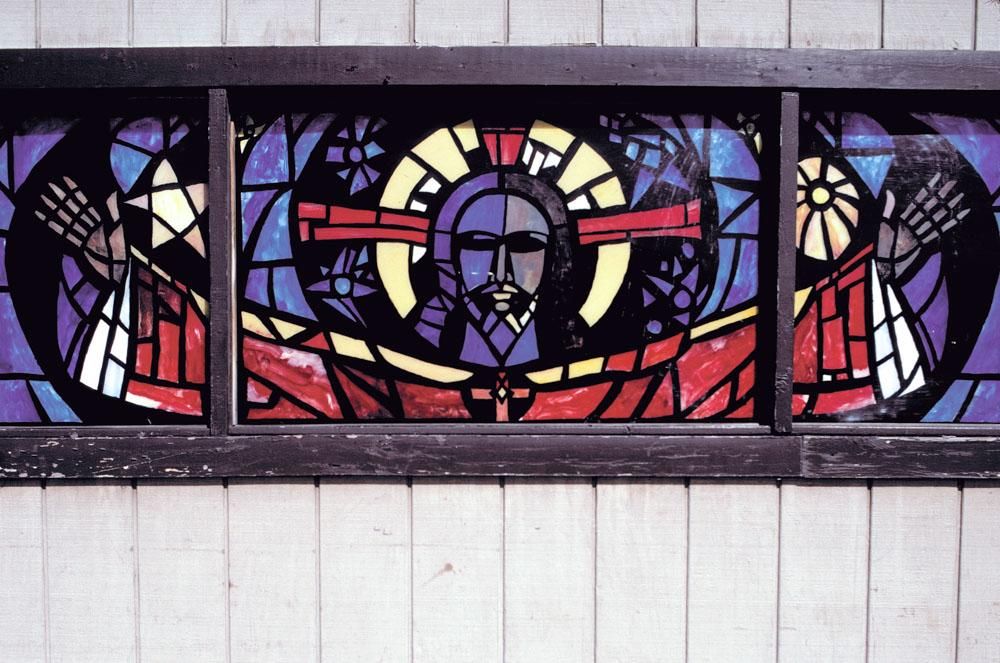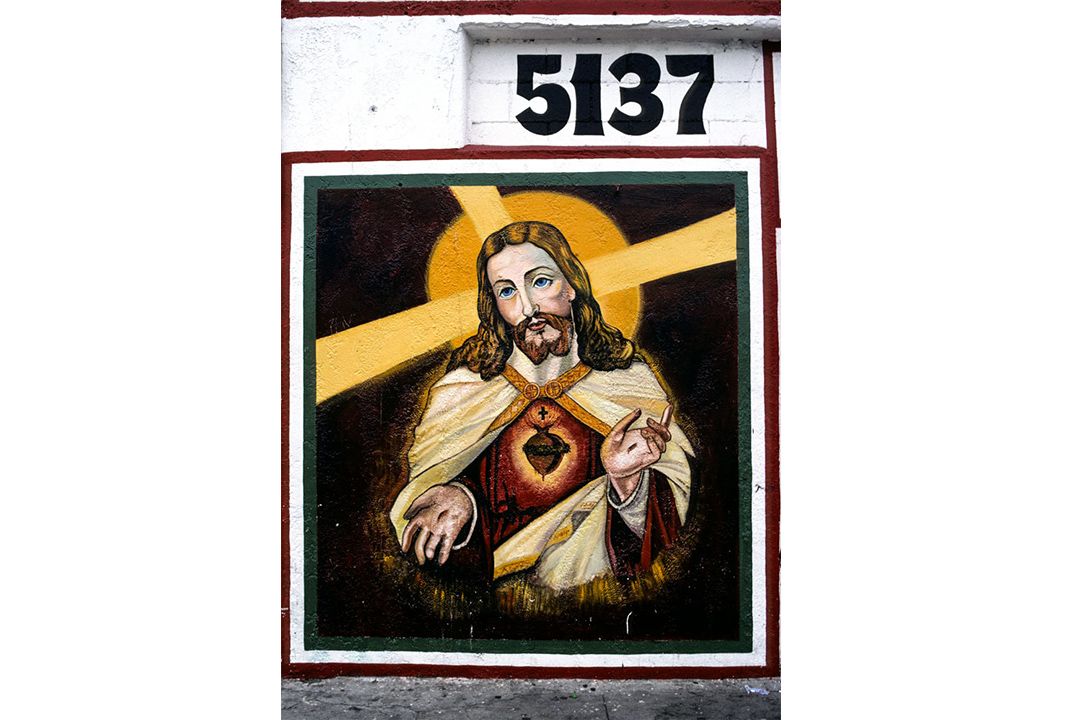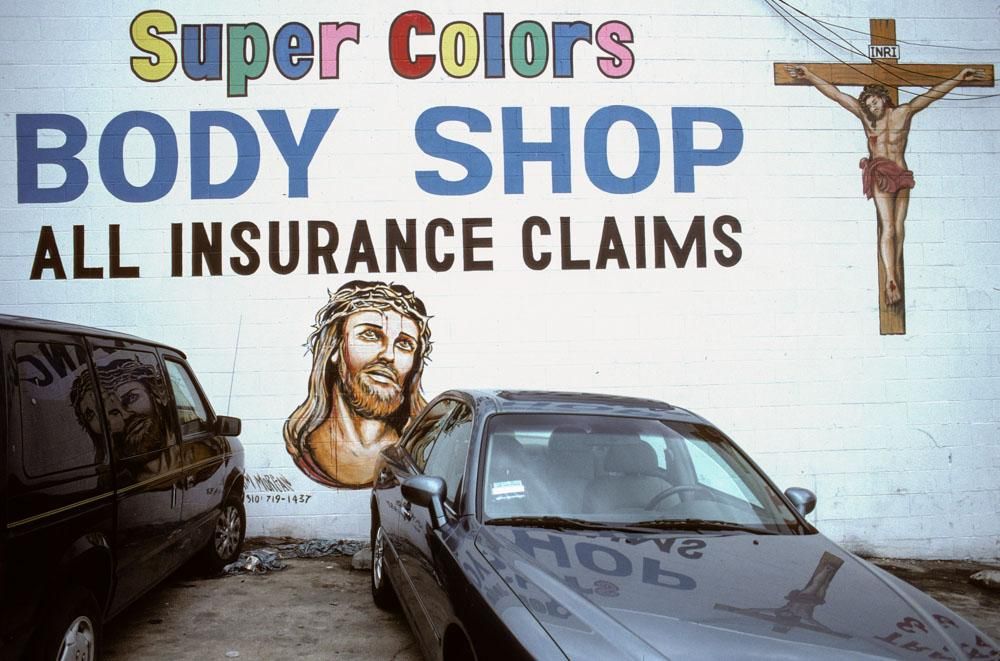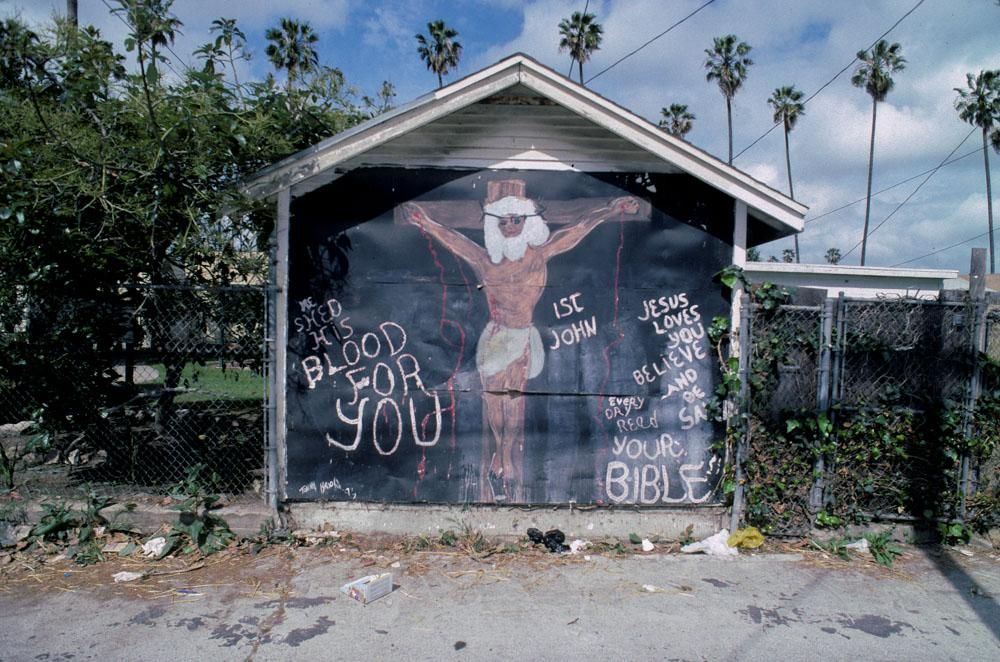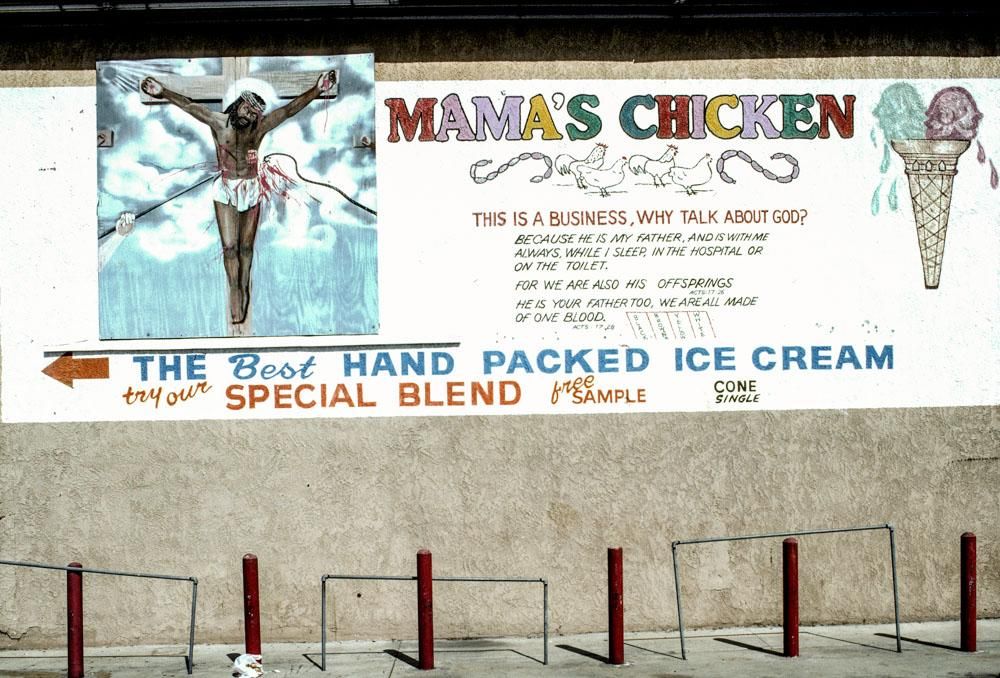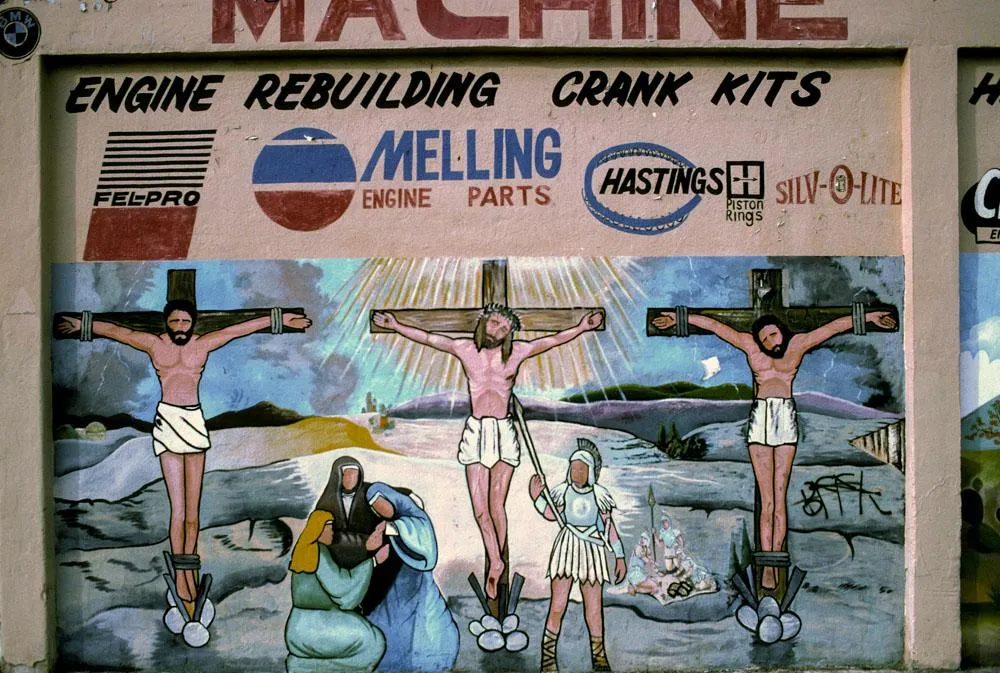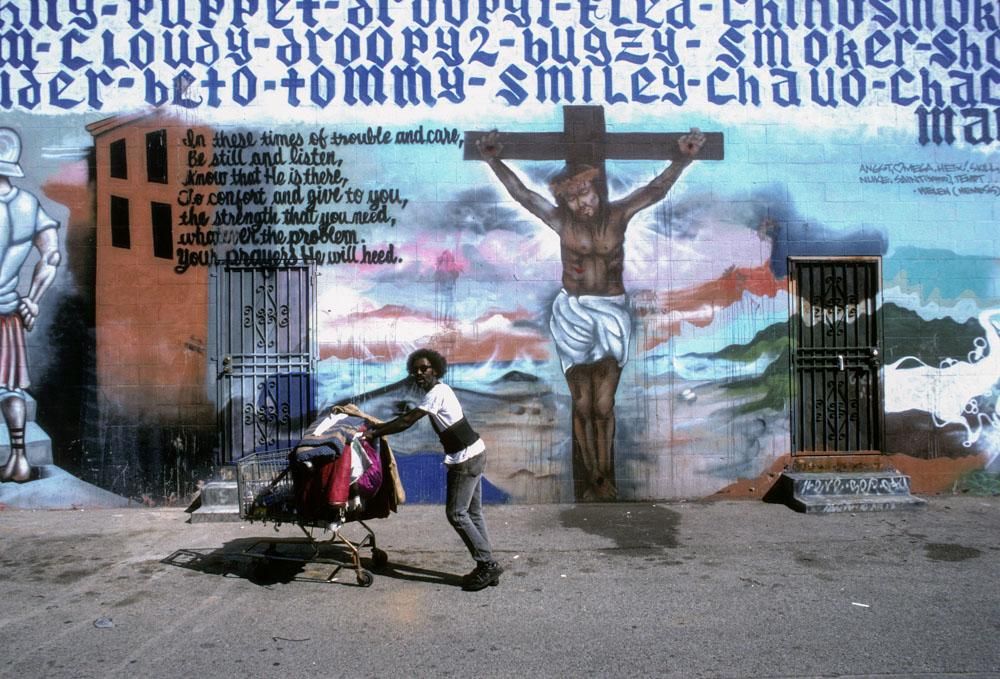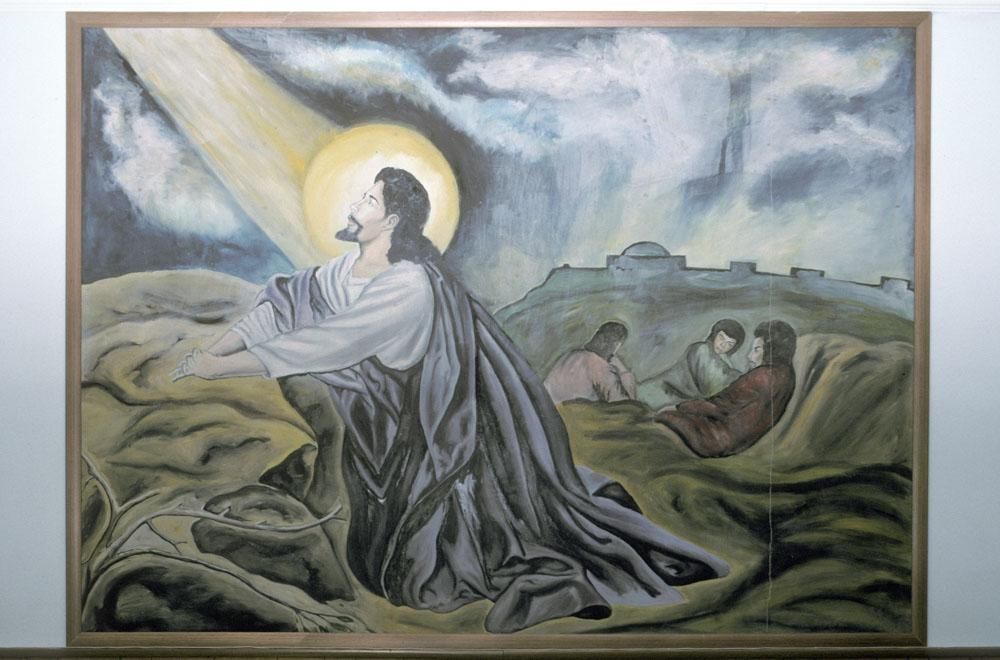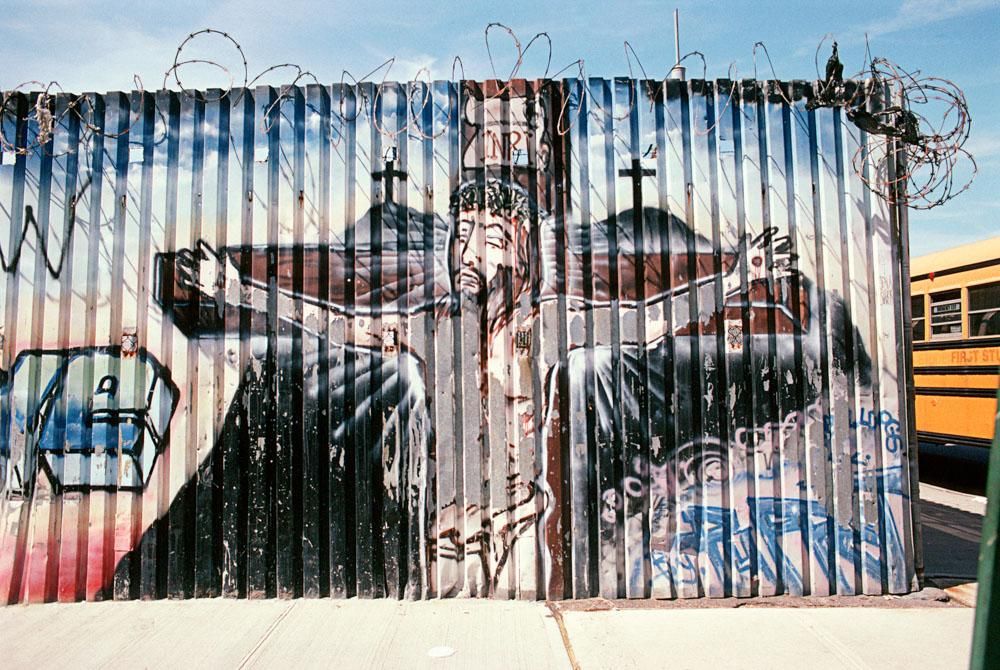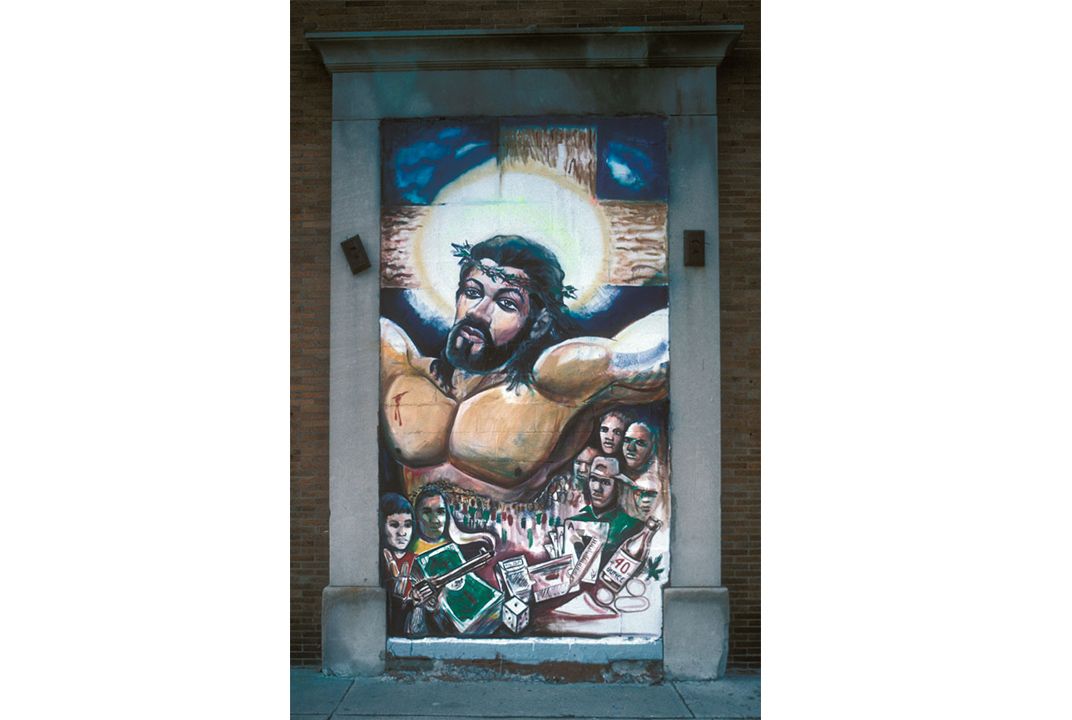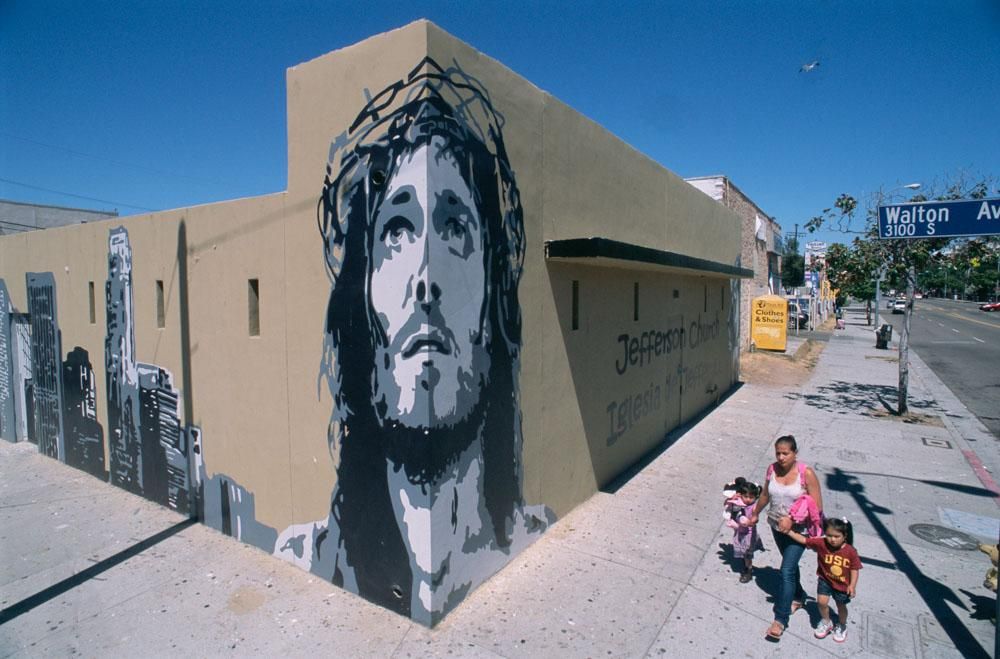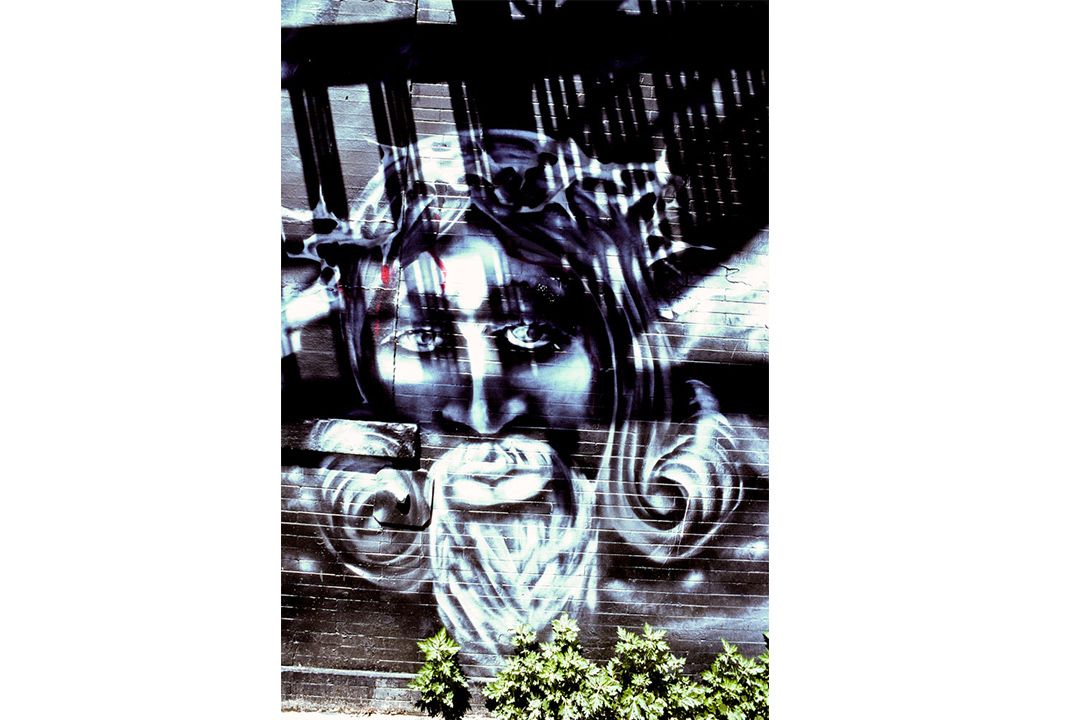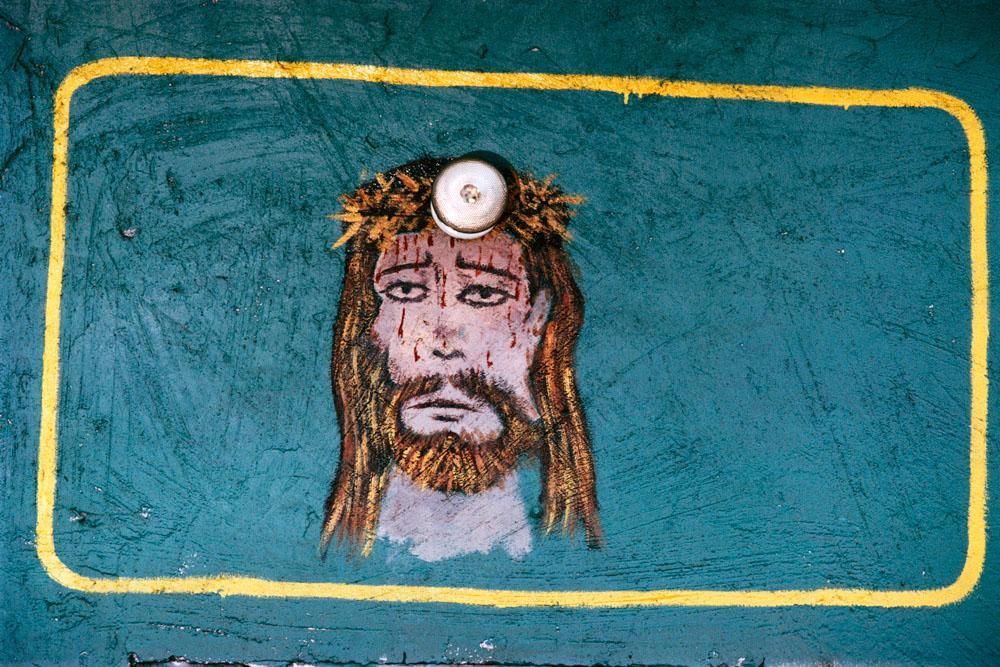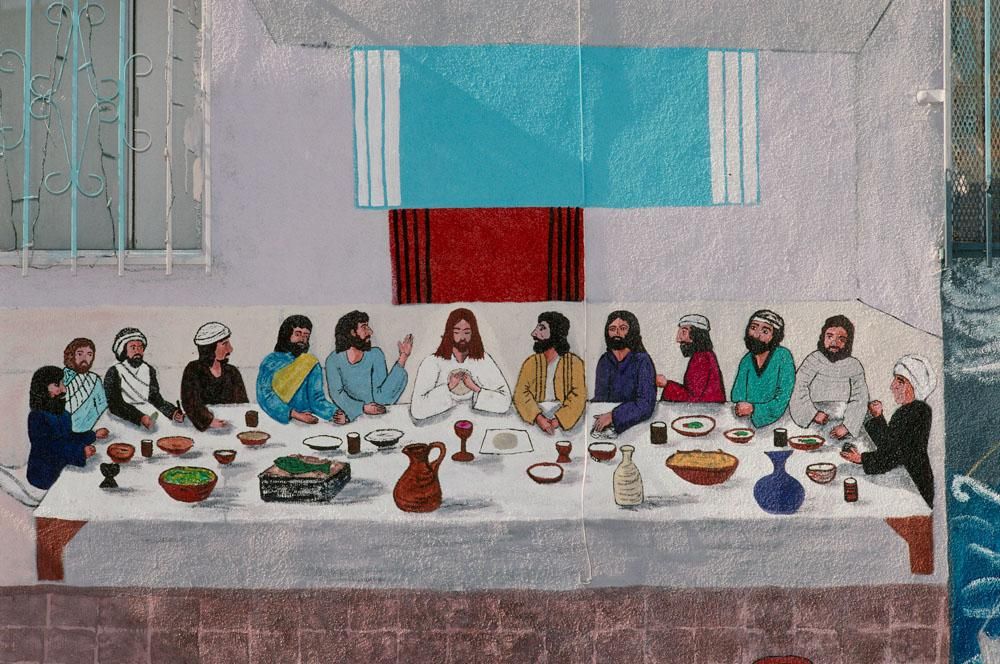The Passion of Christ, As Seen in Murals Around America
Photographer Camilo Jose Vergara looks at depictions of Jesus in murals across America
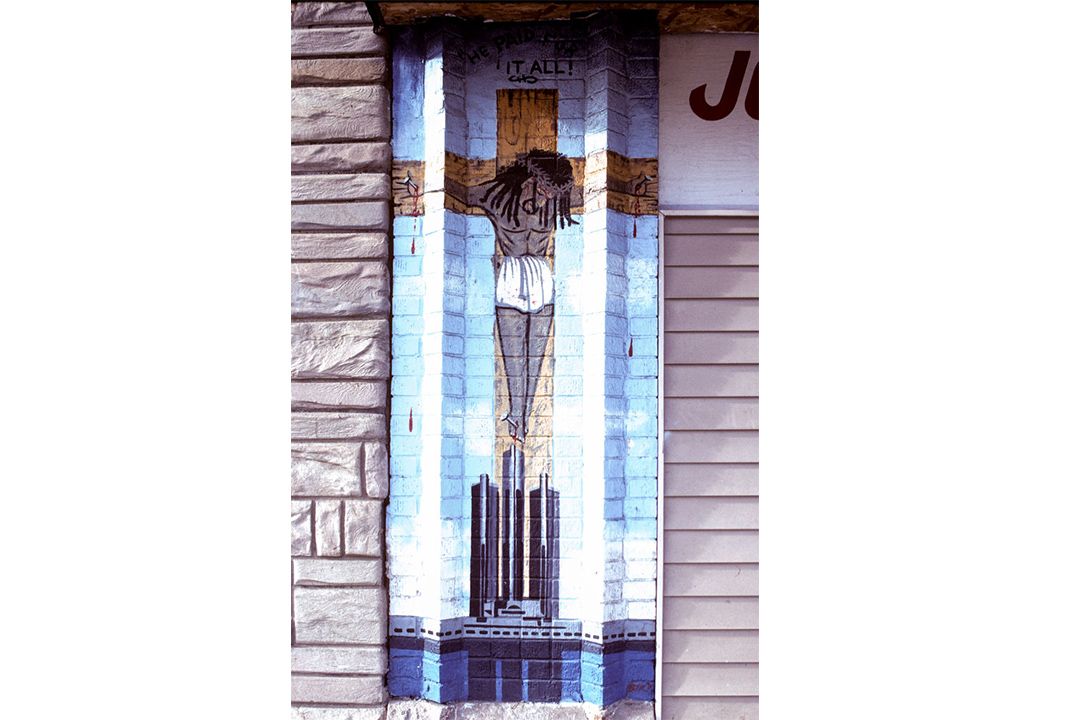
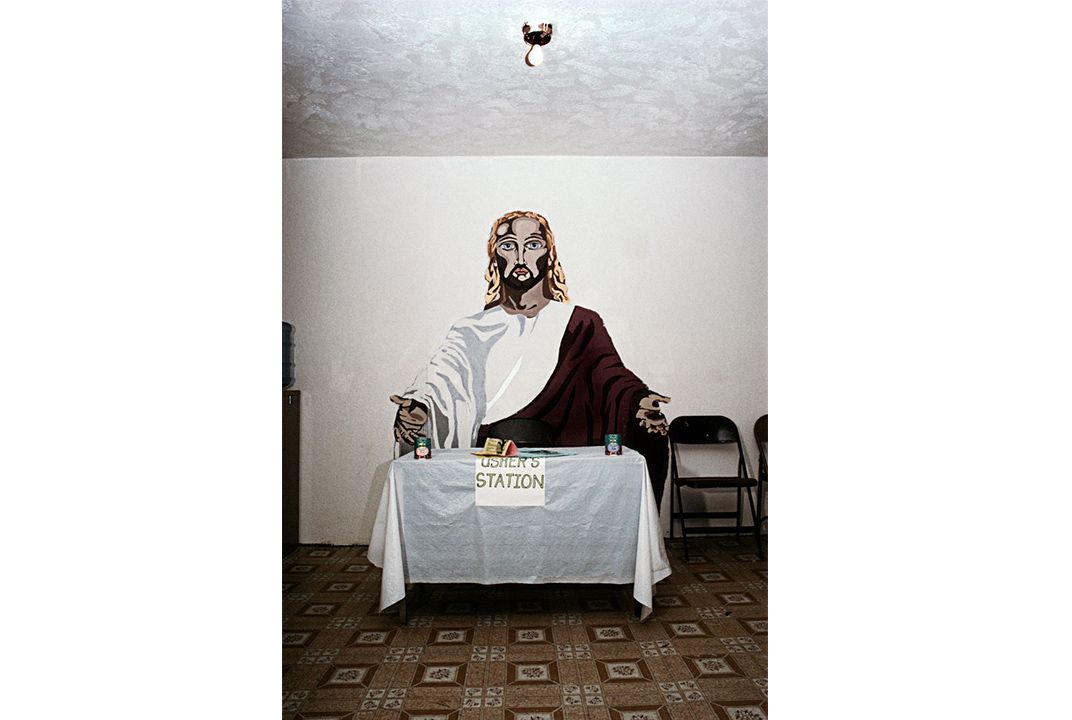
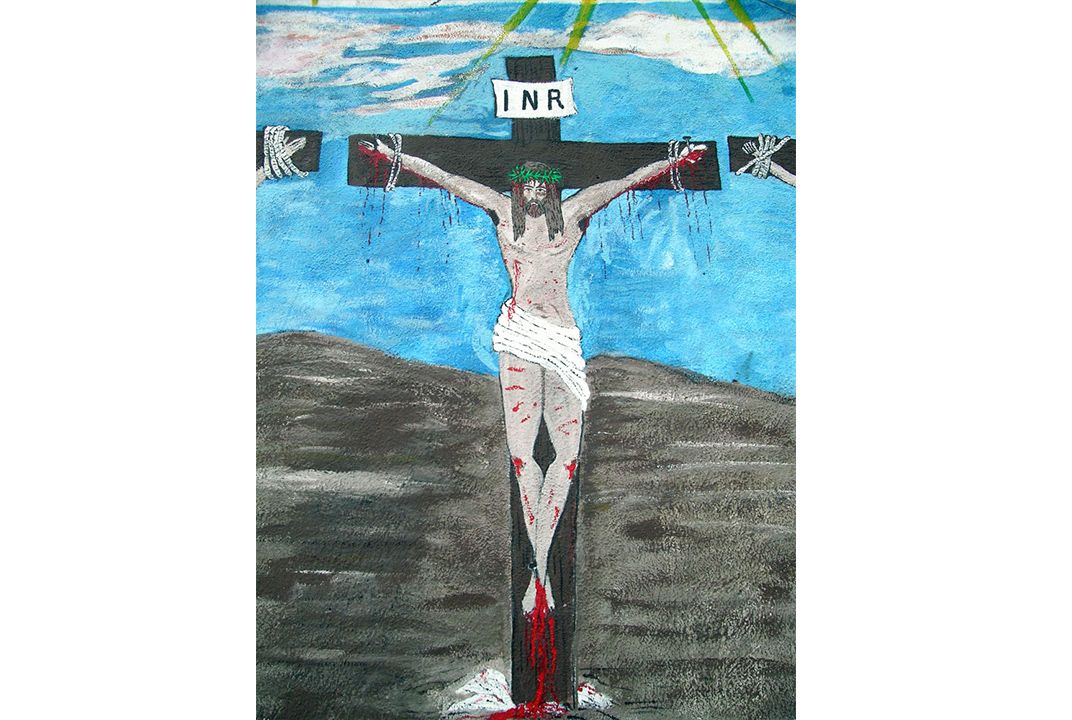
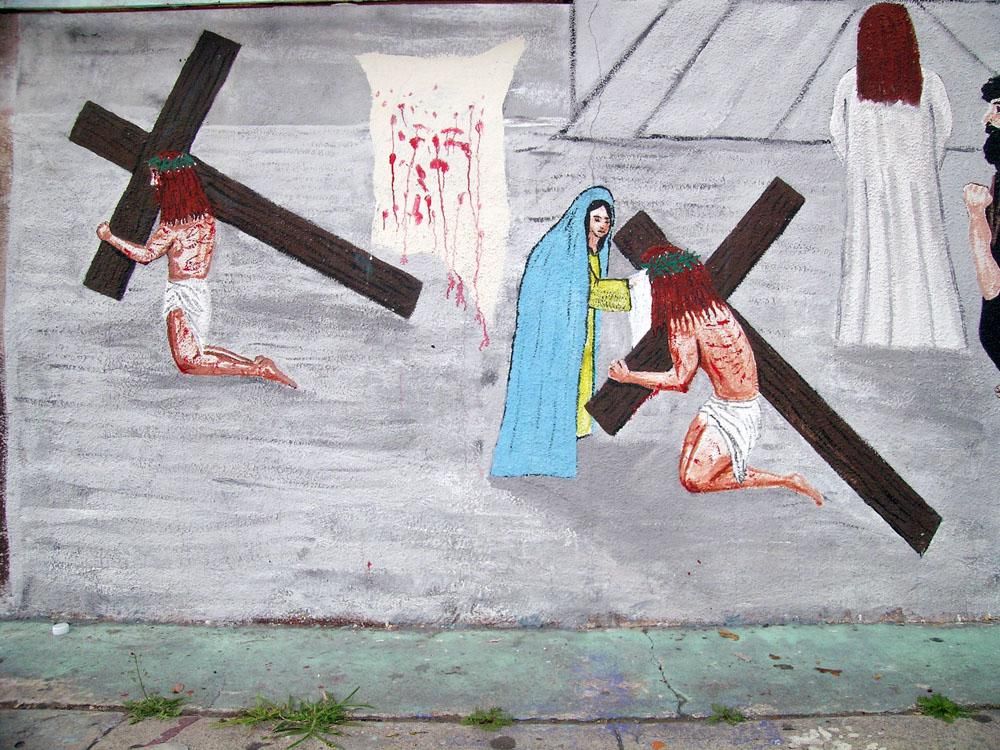
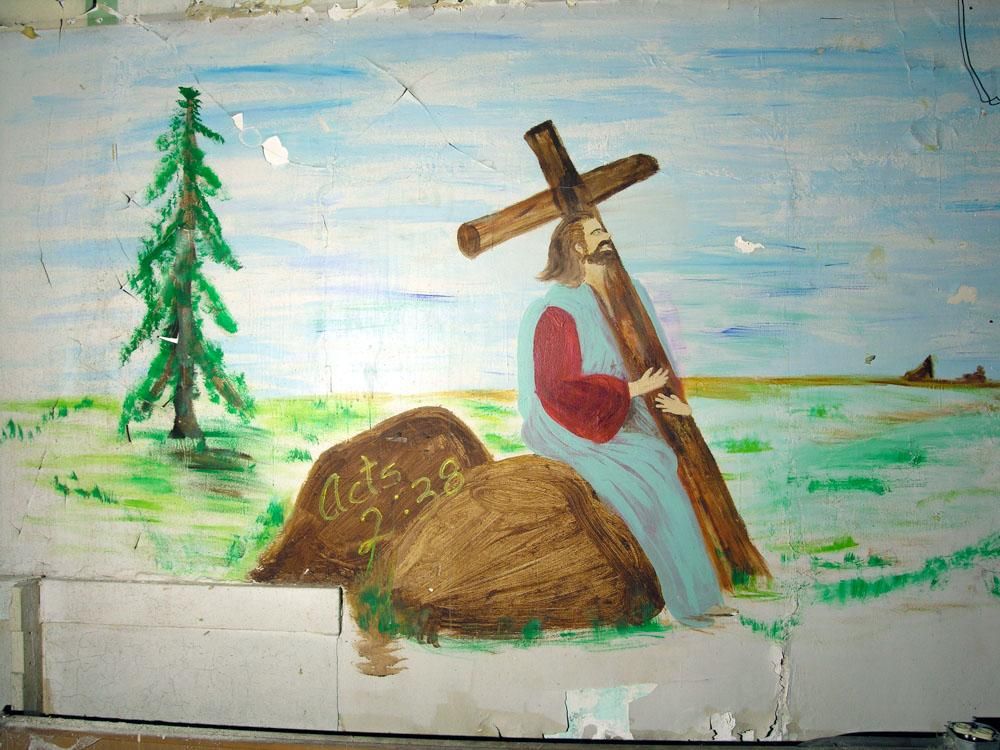
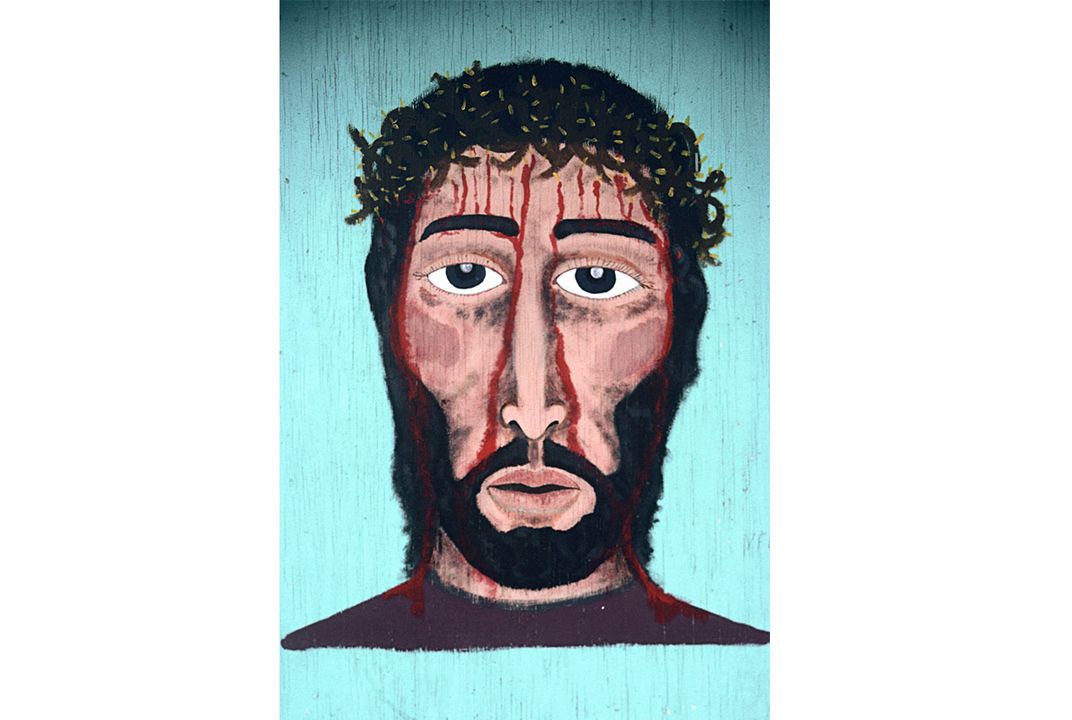
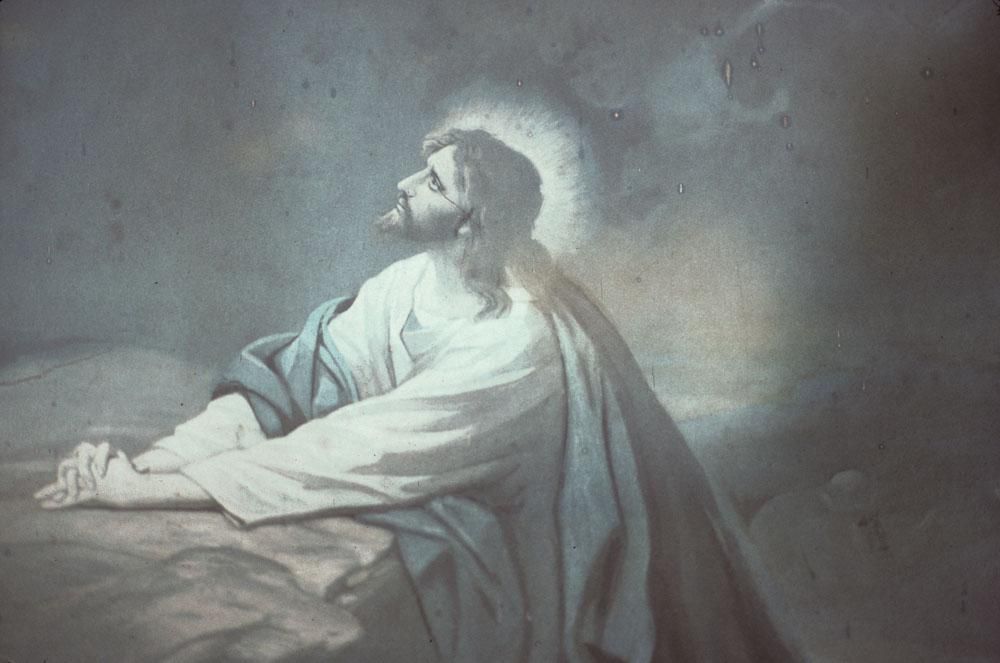

Chronicler of America’s urban streets for more than 40 years, Camilo Jose Vergara has been instrumental in understanding the nation’s poorest neighborhoods through its murals, graffiti and signs. Previous projects have looked at murals Martin Luther King, Jr. and President Obama, as well as a decades-long investigation into Harlem’s changing streetscapes. Below, Vergara writes about what he noticed as he catalogued depictions of Jesus Christ around the United States
Many inner-city walls bear images of Christ enduring his via crucis. We see him at the Last Supper accompanied by his disciples. There are more violent images, too, of Christ pushed and lashed by soldiers, and nailed to the cross. And there are Easter-related images of the Resurrection, in which, rising from the dead, he shows us his wounds.
Tears roll down Christ’s face in San Pedro Place, as he holds the dead body of Chuco, a notorious South Los Angeles pandillero [gang member]. “He Paid for it All” reads the top of a cross painted on the façade of a Detroit storefront church. I found only one image, in the Bronx, in which Christ confronts viewers directly, implicating them in his suffering.
Images of Christ vary widely in poor neighborhoods. He may be depicted with blue eyes or brown, with a physique like a body builder or with an almost feminine delicacy. Black, brown, white or multi-racial, Christ is painted on the walls of parking lots and alleys, and on the facade of churches and stores. Depictions of scenes of the Passion reflect the open religiosity of recent immigrants as well as cultural changes.
The backgrounds of these images often resemble the dry hills of northern Mexico. Sometimes the ocean and the clouds give the setting a Middle Eastern character. In Los Angeles, real palm trees often loom behind. In a Detroit church, Christ embracing his cross and sitting on a rock is shown alone, in a desolate northern Michigan landscape.
Some artists sign their murals with nicknames such as Chill, Nuke, Bugzy, Tommy. Others sign with their full names, among which are Tim Morgan, Kent Twitchell and folk artist Manuel G. Cruz.
The purposes of these images vary. In an interview, a Catholic priest in the Pico Union section of Los Angeles told of his hope that a dangerous, dark alley by Union Avenue would become safer under the presence of the suffering Christ. Perhaps, he imagined, that the image might remind gangsters of their childhood days when they were exposed to Christianity, and stop them from pulling the trigger.
Get the latest Travel & Culture stories in your inbox.
Camilo José Vergara | READ MORE
Camilo José Vergara is a New York City-based photographer known for documenting the poorest and most segregated communities in urban America, a 2002 MacArthur fellow and recently the first photographer to ever receive the National Humanities Medal. He is the author of many books including, "Harlem: The Unmaking of a Ghetto," culled from 43 years of photographing in New York City (Chicago: University of Chicago Press, December 2013).
